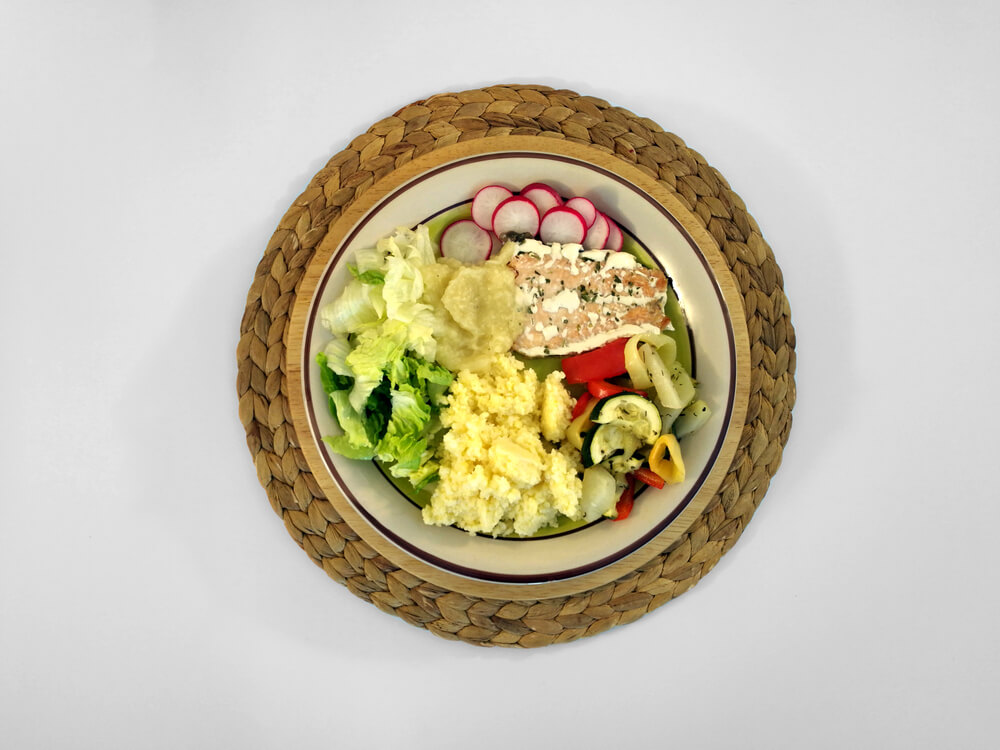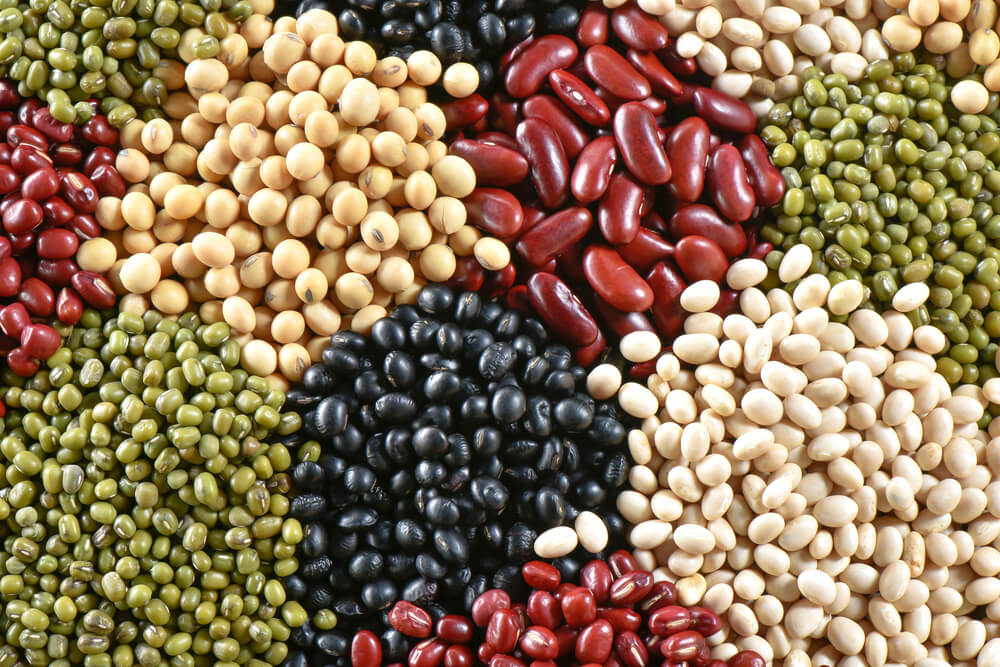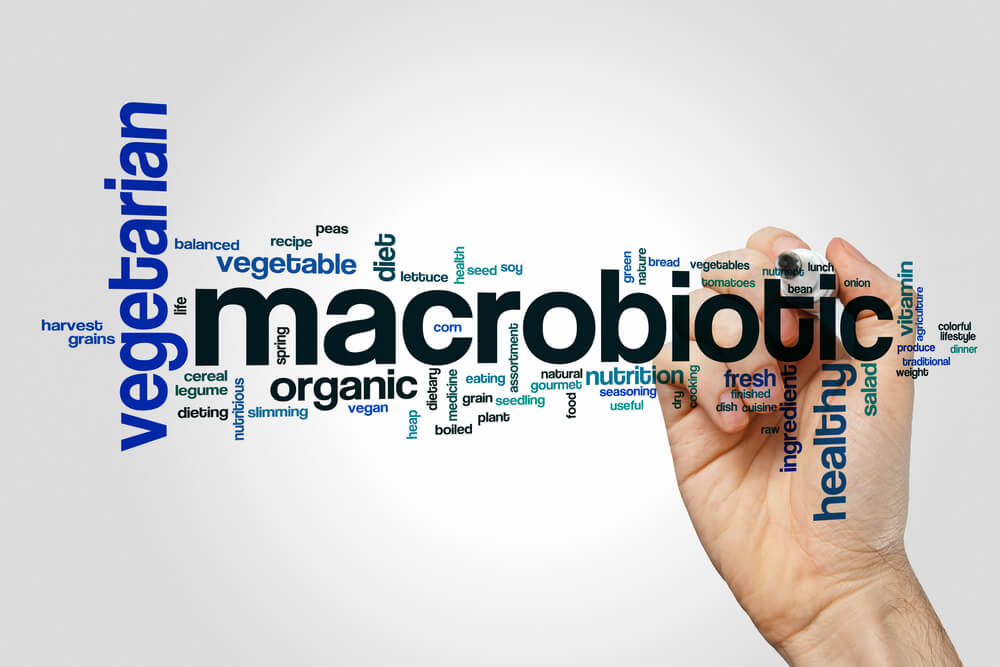The macrobiotic diet is more than a method for dropping weight. The idea of the diet is to help improve life balance. The diet takes elements from Zen Buddhism in order to improve the yin and yang of a dieter.
When successfully following through with the macrobiotic diet, you should experience not only weight loss, but an overall improved mental state as well.
Understanding the diet requires not only looking at the diet plan itself but how it borrows from ideologies from the East Asian religion and incorporates it into the diet itself.
Balancing the Yin and Yang
The macrobiotic diet sets out two goals: to improve the body and to improve the mind. According to an article published by Colombia University (2007), the idea to bring about life balance is taken from Buddhism’s notion of yin and yang (the idea of yin and yang is found throughout Asian religions, including Taoism and Confucianism). Also known as dark and bright, the general idea of yin and yang is two completely opposite entities can complement one another.
When out of balance, the yin or yang will overtake the other, causing an imbalance. In the macrobiotic diet, the idea is to balance the yin and yang of food and the cookware used to prepare the food. By doing so, it helps provide balance to your health and mental state.
This, ideally, leads to preventing disease, both mentally and physically, from attacking the body.
The History of the Macrobiotic Diet
While considered a fad diet today, the macrobiotic diet has been around for nearly 100 years.
George Ohsawa made the diet popular post World War I in the 1930s. George Ohsawa (his given name was Nyoichi Sakurazawa) spent much of his life in Europe, writing books about oriental health.
Writing more than 300 books on the subject over the course of his life, Ohsawa defined health as having excellent memory, a sense of humor, having a strong appetite, a lack of tiredness/fatigue, the ability to show gratitude and the ability to act on thoughts (according to the Macrobiotic Guide’s History of Macrobiotics).
George Ohsawa spent most of his early childhood in a poor samurai community in Japan. According to Ohsawa, he treated tuberculosis by using the notion of yin and yang. This became the basis of the diet he eventually would go on to name the macrobiotic diet.
Several of his followers helped increase the popularity of the diet following Ohsawa’s death.
Sensitive to Your Diet
Have you ever woken up with a grumbling stomach, sore from something you ate the day before?
Maybe you place blame on one particular food, or perhaps you just don’t know where it came from, deal with it and don’t think twice about the discomfort once it’s done. Whatever the reasoning, this typically stems from something you ate.
A major part of the macrobiotic diet is becoming sensitive to your diet.
You connect with the food and can feel how it affects your body. This way, you can make changes based on how you feel. Understanding how an individual food makes your body feel is imperative to bringing balance to your mental and physical health.
With processed foods, identifying the cause of your discomfort is next to impossible, due to the large number of ingredients found in the food (check the ingredients on packaged food next time you purchase it.
You may be surprised as to just how many ingredients are used to make a seemingly simple item.
Macrobiotic Diet Foods
The exact foods you may eat typically varies based on the regional diet plan you decide to follow.
While traditionally a Japanese diet (which is the most popular), there are slight variations should you follow an Indian, African or South American based macrobiotic diet. The basic principles remain the same though, which makes it possible to either follow one specific region’s diet or mix and match as you see fit.
The main staple of the Japanese macrobiotic diet is whole cereal grains, such as brown rice. This makes up 40 to 60 percent of the food you consume. An important aspect of the food (especially with regards to whole cereal grains) is to thoroughly chew it before swallowing.
This improves digestion and reduces strain on the stomach. Often times, you may experience stomach discomfort and attribute it to the food, when in reality it is due to your stomach having to work extra hard to process and digest under chewed food.
Vegetables should then make up 25 to 35 percent of the food.
Followed by beans and legumes (five to 10 percent), miso soup (five percent), sea vegetables (five percent) and naturally processed foods (five to 10 percent).
The diet may include seafood, seeds, nuts, fruits and seasonings a few times a week.
Depending on the kind of dietary fitness you’re going for, including high protein fish, shrimp and other seafood on occasion throughout the week is important, as most of the food groups included (outside of beans and legumes) have little protein, which is important for building and repairing muscles and giving energy.
All vegetables and fruits consumed should be organic in order to remove pesticides, chemicals, and steroids from your diet.
Additionally, you should not use the microwave to prepare any of your food.
No “Stimulating” Food
The diet often refers to “stimulating” foods. This means seasoning the food. In order to develop a sensitivity to the food you consume and to understand how it affects and interacts with your body, you need to consume only the food. Seasoning may affect the way your body interacts with the food. Hot spices may cause digestive discomfort while salts can increase bloating.
Due to this, it is necessary to avoid stimulating the food, especially when first starting off with the diet.
As you begin to understand how your body reacts to each food, you may decide to include small amounts of seasoning, although it is recommended to only do this a few times a week (similar to including seafood and fruits in the diet a few times a week).
Liquids Allowed for Cooking and Drinking
Water is the drink of choice for the macrobiotic diet. You should avoid consuming beverages with sugar, such as juices and sodas. Coffee and most teas should also be avoided while on the diet. However, some teas are suitable, such as those coming from roasted grains or greens, such as dandelion tea.
When preparing food with water, the water needs to be purified. Tap water often contains varying minerals (such as calcium, iron, lime and trace amounts of other minerals). In order to reach a health balance both mentally and physically, you need to rid as many of the undesirable elements from food and water.
Transitioning Into the Diet
It is not recommended to simply stop your current eating habits and move into the macrobiotic diet.
Doing so may be a shock to your system. It is not recommended to make any sudden dietary shift, regardless of the kind of diet you are moving from or to. While migrating into the macrobiotic diet, you may continue eating naturally raised animal products (such as cage-free chickens, GMO-free meats, and cheese) and slowly work your way off of these foods until you are completely on the food recommended by the macrobiotic diet.
Cookware
Cookware plays an important role in the preparation of food. It also plays an important role in the macrobiotic diet. According to the New York Times (2013), the cookware you use to prepare food can and often does affect the nutrients within the food. Before moving into the suggested cookware products, it is important to know how each cooking material affects what you prepare.
According to the same New York Times article, uncoated aluminum, which is a popular cooking surface material, may slightly increase your chance of developing Alzheimer’s disease. Lead cookware may leach into liquids and software food (such as fruits and vegetables), which in turn may enter the body.
Some ceramic cookware includes lead.
Copper, a popular cooking material due to its ability to evenly heat can leach into food products, which in turn may cause vomiting, diarrhea, and nausea. Even if the copper cookware uses a protective coating, the coating will cook and wash away over time. Teflon is a nonstick coating brand that has increased in popularity, but it only functions well at medium to low temperatures. Anything higher and the Teflon gives off fumes, which can irritate both humans and animals within the household.
However, both stainless steel and cast iron are seen as cooking surfaces that give off little to no chemicals or fumes during the preparation process.
With this basic understanding of cooking surfaces, the macrobiotic diet suggests specific materials use during the preparation and consumption of food. Ideally, cooking utensils should be made from organic materials, such as wood or bamboo. Glass is an acceptable prepping container as well. Most food should be cooked within a cast iron container, although stainless steel is fine.
The macrobiotic diet does indicate you should not use an electric oven.
Instead, use natural gas ovens instead.
Possible Health Risks
Whenever you limit the kind of foods you intake, possible health risks often come with it. The macrobiotic diet’s main purpose is to bring balance to your physical and mental health. However, according to the American Cancer Society (1984), you should not solely rely on the diet if you current have cancer. It is not an effective treatment against the disease and you should still continue with the doctor recommended treatments. With that said, the American Cancer Society does recommend a low fat, high fiber diet, mostly derived from plant products, which is exactly what the macrobiotic diet is.
The USDA National Nutrient Database recommends you to take vitamin supplements, should you decide to take part in the macrobiotic diet. This is because due to the lack of fruits, you likely will not consume enough vitamin C. A lack of vitamin C may lead to the development of scurvy (yes, the same condition pirates use to suffer from when out at sea for months at a time).
By not consuming enough vitamin C, you become more susceptible to the common cold. You also increase the chances of gum disease, bleeding and a decrease in red blood cells. You will also feel tired. Feeling tired is one sign of poor health, according to George Ohsawa, the creator of the macrobiotic diet.
To stay true to the diet, you should stick to dietary supplements and not the powdered drinks that include the vitamin.
When considering the macrobiotic diet, it is important to follow the modern dietary plan and not an older version of the diet.
When George Ohsawa first created the diet plan starting in the 1930s, much of the world remained in a state of depression and war, making it difficult to purchase a wide array of foods. Due to this, the diet manly focused on the sole eating of brown rice and water. This practice, however, leads to serious health complications and even death due to nutrient deficiencies. The best macrobiotic diet practice is to follow the food listings as mentioned earlier.
The diet plan is not recommended for young children or women who are or may become pregnant.
Why?
This is because of the lack of certain nutrients and fats, it can prevent the child or fetus from developing properly.
Macrobiotic Diet Recommendations
Several major health organizations have recommended the macrobiotic diet. According to the American Medical Association in its self-published “Family Medical Guide,” the macrobiotic diet is a “healthful way of eating.” It indicates the diet’s ability to cut out processed foods, trans fats and other undesirable ingredients that can lead to serious health complications. Additionally, the USDA recommends the diet, stating it is a healthy form of eating.
Both of these dietary recommendations are based on the foods mentioned above.
It is imperative to avoid the strictest form of the diet (only brown rice and water).
Conclusion
The macrobiotic diet does offer significant health benefits.
It reduces processed foods from the diet and gives you food high in fiber. By cutting out outside influences such as minerals in tap water, chemicals from cooking utensils and only using organic foods, you can develop a sensitivity to your food and increase your understanding as to how your body reacts.
This, in turn, can have desirable health benefits.
However, as you will limit the kinds of vitamins and minerals consumed, it is smart to take vitamin supplements in order to offset this issue. While not a diet for everyone (such as young children and pregnant women), there are enough health benefits behind the diet to suggest it may be a healthy, organic and a vegetarian dietary option.
-Terry Asher
Terry Asher
Latest posts by Terry Asher (see all)
- Better Family – Product Review Liquid Daily 2 oz - Dec 16, 2024
- Post-Workout Recovery: The Key to Optimal Performance - Nov 25, 2024
- Pre-Workout Supplements – Everything You Need To Know - Nov 18, 2024















[…] post Macrobiotic Diet – Everything You Need To Know appeared first on Gym […]
[…] researched applications out there as all the dietary information (there’s a ton) is backed by the USDA. This isn’t the kind of app that is designed to post photos or updates on social media. If you […]
[…] purposes on the market as all of the dietary info (there’s a ton) is backed by the USDA. This isn’t the type of app that’s designed to put up images or updates on social media. In […]
[…] applications out there as all the dietary information (there’s a ton) is backed by the USDA. This isn’t the kind of app that is designed to post photos or updates on social media. If you […]
[…] applications out there as all the dietary information (there’s a ton) is backed by the USDA. This isn’t the kind of app that is designed to post photos or updates on social media. If you […]
[…] applications out there as all the dietary information (there’s a ton) is backed by the USDA. This isn’t the kind of app that is designed to post photos or updates on social media. If you […]